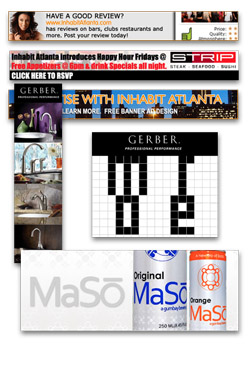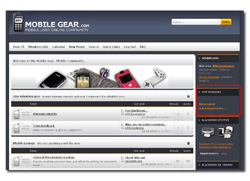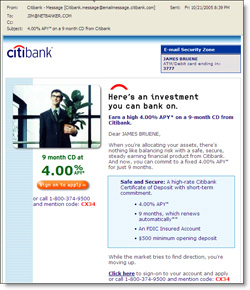
Banners/Skyscrapers, Buttons, and more...
|
||||
Banners |
|
|||
The most basic form of online advertising is a banner. A banner is like a mini billboard that are can be found at the top or bottom of any web page. Companies can pay anywhere from nothing to thousands of dollars a month to place their banner ads on websites. Companies can also be charged at standardized cost-per-thousand rates. In other words, the site can charge the amount of impressions, or times a person clicks on an ad, and can vary from site to site depnding on the number of visits and type of visitors they get. _____________________________________________________________
Skyscrapers are exactly like a banner except instead of being displaying across the top or bottom horizontally, they are displayed vertically at the left or right of a page. Skyscrapers can stretch the length of a page, but would most likely be charged more. _____________________________________________________________
Buttons are small versions of a banner or skyscraper and often appear as icons. They commonly lead to a landing page, which is a marketing tool that leads people into the purchasing or relationship building process. Since buttons are smaller and take up less space, they cost less as well. Text Links, a popular alternative to buttons and banners, are texts within the context that are linked to corresponding sites. _____________________________________________________________
Rich-media-advertising includes graphical animations and ads with audio and video elements that overlay the page or even float over the page. Full motion and animation have become somewhat of a commonplace thanks to a hosts of new software technologies, such as dHTML (dynamic hypertext markup language), Java, and Flash. The once static banner and button ads have been complemented with animations and sound. Interstitial - An interstitial is a type of rich-media ad that is a catchall term for a variety of ads that play between pages on a Web site, popping up on the screen while the computer downloads a Web site that the user clicked on. _____________________________________________________________
Direct-mail advertising is the most medium for generating inquireies and leads and for closing a sale. It is also one of the most expesinsive medium on a cost-per-exposure basis. E-mail advertising has utilized the ability of direct mail advertising to increase it's effectiveness and cost efficiency. This is why 77% of marketers send e-mail advertsing to customers who have asked for it. Not to be confused with spam, which is really just electronic junk mail that is generated for mass e-mail advertising by unknown entities to a general mailing list. Spam mail usually results in frustrated customers who view their messages as unwanted e-mails. _____________________________________________________________ |
||||



